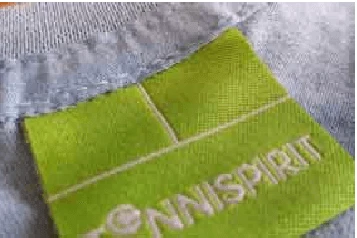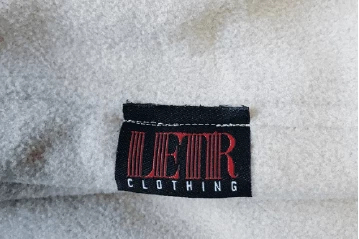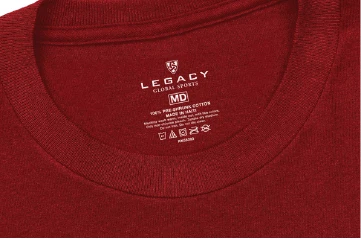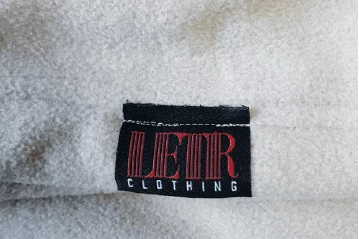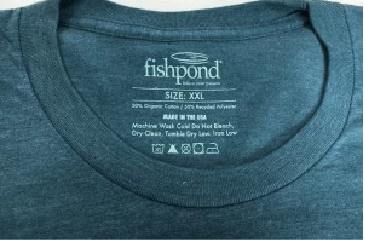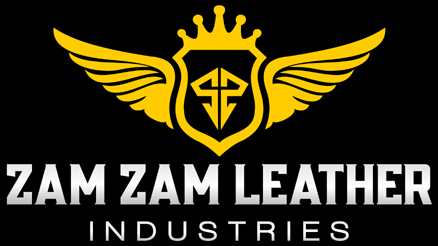CUSTOMIZATION
YOURS PRODUCTS
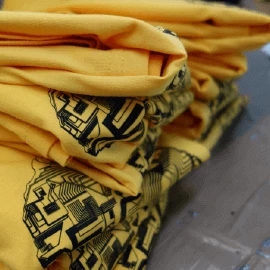
Sublimation is the best choice for team uniforms and custom sports apparel. Many people ask “What is sublimation printing and why choose to sublimate vs. screen print”? Sublimation is the process of transferring dye to a fabric using heat. The image is printed on special paper placed on the garment and heat is applied, allowing the ink to become part of the fabric. This will leave you with a more breathable, soft-hand feel to the fabric. The best part is that the numbers, letters and graphics do not wear off!
SCREEN PRINTING
Screen printing is very much an art in more ways than one. Not all t-shirt printers or promotional clothing printers take the same care over the quality of the printing as we do. We make sure our print doesn’t crack, colors don’t overlap, the design is straight and the ink is thick enough.
TYPES OF SCREEN-PRINTING INK
Plastisol Inks
The standard ‘go to’ inks for most screen printing jobs.
Oil based inks formulated into PVC molecules and pigment, suspended in a plasticizing emulsion
Tend to sit on top of the t-shirt fibres creating a raised and textured feel
Dark garments require a heavier deposit than light garments and this exacerbates the ‘raised’ feeling.
If the ink is used straight out of the container, it is very opaque and this means your prints achieve a brightness and vibrancy that is superior to all other types of inks.
Plastisol inks are also very versatile with special effects
You can create interesting textures with ‘puff additives’, glitter, suede effects, cracked effects, metallic and pearlescent effects.
Plastisols will work on almost any standard fabric used in garment production and this is why they also remain the firm favourite
Water based Inks
For ethical reasons, The Soil Association has approved water based inks on the basis that they offer a better, healthier alternative over oils/pvc products.
They are softer to the feel than plastisols.
When printing onto white shirts they will give an almost ‘invisible to the touch’ effect as the pigment soaks into the fibres of the garment while the water dries or evaporates during the curing process.
They are trickier to work with from a technical standpoint and for tonally variable work, we may suggest to use plastisols.
They work best on 100% cotton garments and work with limited effect on cotton/poly mixtures.
For a more detailed look at when water based inks are best check out our blog “When can water based inks work and when do they fail”
When printing onto dark shirts, water-based inks need a magic trick to make them work.
Discharge Printing
A bleaching agent is added to water-based inks, which removes the colour from the garment precisely where the ink sits so that the pigment settles onto a neutral colour. This happens in the dryer when the ink reaches the required temperature.
The results can be excellent with ‘thin’ ink deposits and fairly vibrant colours. This contrasts with the thick deposit required with plastisols to achieve the required brightness.
Plastisols will always win on brightness but many designs were created to look ‘vintage’ and this is where discharge printing can become relevant.
BROWSE OUR SCREEN PRINTING GALLERY
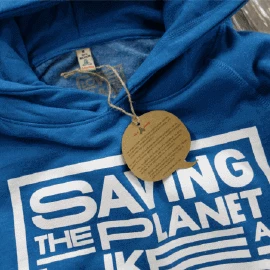
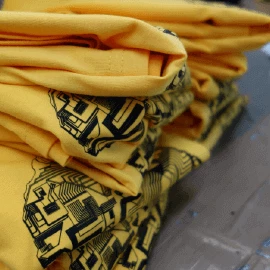
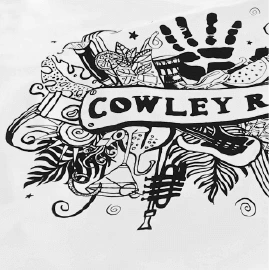
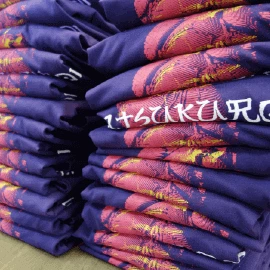
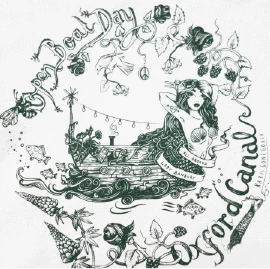
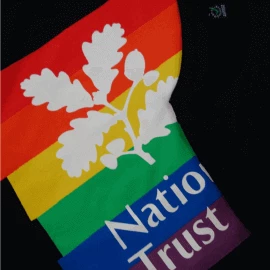
Embroidery
Embroidery is a customization process that consists of applying decorative designs onto fabric using a needle. These motifs are traditionally rendered in the thread and are composed of different kinds of stitches.
EMBROIDERY VS SCREEN PRINT
When Is Embroidery A Better Solution Than Printing?
Embroidery offers a more prestigious-looking, harder wearing, and decorative solution. It’s also textured, a 3d effect that simply shouts quality. It’s ideal for:
Tough outdoor workwear that’s washed frequently
Catering wear and kitchenware, which gets dirty fast and needs regular hot washes
When you want your people to look super-smart and make the best possible impression
If your budget doesn’t stretch to regularly replacing worn-out clothing
On our rain jackets and heavy winter jackets, which often come pre-treated with a water repellent coating that also repels printing inks and adhesives
On fleeces and knitwear, where the fluffy surface means it’s impossible to print
On caps, where it creates a much better finish than printing
When Is Printing A Better Solution Than Embroidery?
Embroidery doesn’t work all the time, for every order. Sometimes it’s best to have your logo or design screen-printed or digitally printed instead, using a direct to garment digital process or even a vinyl transfer. Print is probably best when:
Your design is very detailed or features tiny lettering – text has to be at least 6mm height to be embroidered successfully. If your design isn’t big enough and you want embroidery, we can often adjust the design to make it work, by enlarging the text and rearranging it to the right scale
Your logo has gradients, where an object in it gradually changes colour as you move across it, also called ‘hombre’
When your logo is large. We usually quote for designs requiring up to 25,000 stitches. An ordinary left breast logo, for example, tends to be anything from 3000 stitches per line to 20,000 stitches for a particularly dense background stitched design, for example a university crest. The maximum size of an embroidered logo is usually 10cm x 10cm, which means it is most suited to the left breast area, arm or the nape of the neck
Embroidery has weight, which means it pulls on light fabrics and thin garments with a density of under 140 grams per square metre and looks nasty. Most modern sportswear is made of polyester, as are cheap T shirts and fashion wear
Embroidery can leave a slightly rough finish on the inside of the garment, which can irritate the skin when you move around a lot, for example when playing sport
BROWSE OUR EMBROIDERED WORK GALLERY
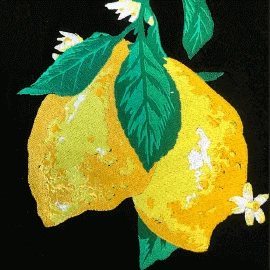
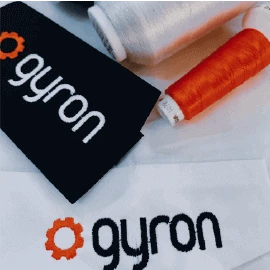
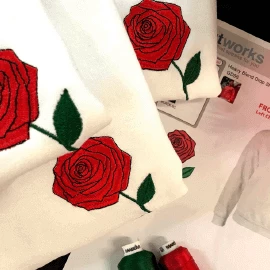
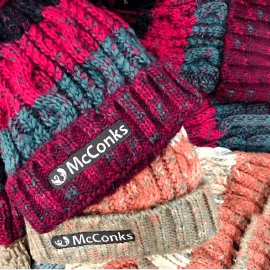
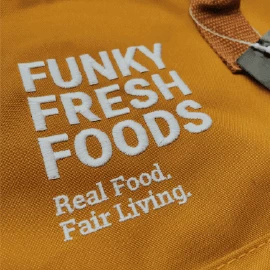
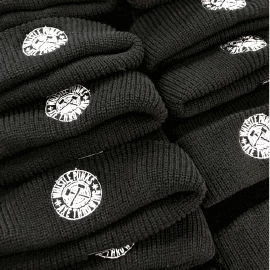
BRANDED CLOTHING & GARMENT RELABELLING
At Zarlan Sportswear are able to offer a full range of labelling, relabelling and bespoke promotional branded clothing services tailored to your exact requirements.
LABELLING AND BESPOKE CLOTHING
If you are looking to launch your own brand of clothing and don’t want to commit to 1000’s of products made with your own label we offer a relabelling service. There is a minimum number of labels that have to be made, which can be held by us and we simple re-label the exact number of garments you need each time so you don’t have to commit to buying lots of stock. This means that with low-volume digital printing you can launch a brand with only a small amount of capital.
Re-labelling is a two step process. The old label needs to be removed. Once removed a new one is sewn in together with a size label if needed. Some brands such as Continental and Anvil come with just a size label so you can use the same label for all the sizes. Others such as Gildan need either a different label for each size or an additional size label. The new label needs to be sewn into the collar of the shirt. To do this the collar needs to be unpicked, so even if we don’t need to take an old label out we still have to unpick the collar, which is time consuming.
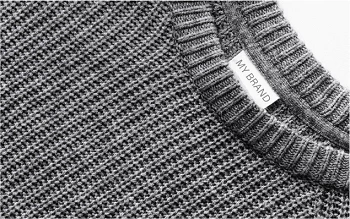
WOVEN & PRINTED LABELS
